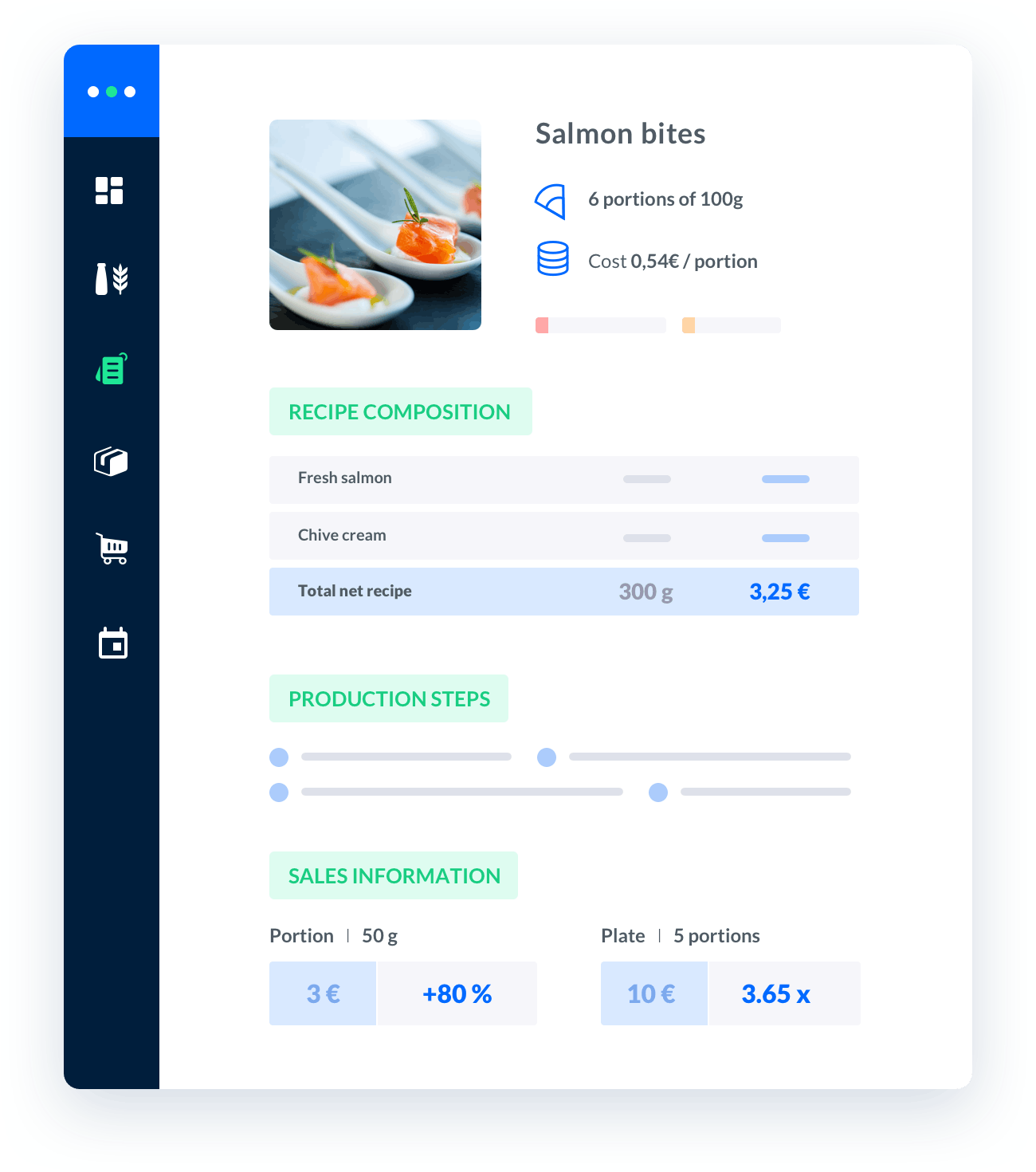cost per meal calculator
Calculating the cost per meal is an essential task for professionals in the catering industry.It helps them determine the profitability of their menu items, make informed pricing decisions, and manage their expenses effectively.

Melba: the food cost app to optimize the profitability of your restaurant
Discover how to optimize the profitability of your restaurant with melba

The ultimate guide to food cost restaurant
Learn more about the food cost basis and how to reduce your food cost percentage
Calculating the cost per meal is an essential task for professionals in the catering industry. It helps them determine the profitability of their menu items, make informed pricing decisions, and manage their expenses effectively. In this article, we will explore different aspects of calculating the cost per meal and provide you with the necessary information to perform accurate calculations.
Understanding Cost Per Meal
Cost per meal refers to the total expenses incurred for preparing a single meal. It includes the cost of ingredients, labor, overheads, and other related expenses. By calculating the cost per meal, you can analyze the profitability of each dish and make adjustments to your menu or pricing accordingly.
1. Cost of Ingredients
The cost of ingredients forms a significant portion of the total cost per meal. To accurately calculate this cost, you need to consider the quantity of each ingredient used and its corresponding price. Include all the ingredients used in the recipe, including spices, herbs, and condiments. If you purchase ingredients in bulk, divide the total cost by the number of servings to determine the cost per meal.
2. Labor Costs
Labor costs include the wages or salaries paid to the staff involved in meal preparation. This includes chefs, cooks, assistants, and other kitchen staff. To calculate labor costs per meal, identify the total labor cost for a specific period (e.g., a week or a month) and divide it by the number of meals prepared during that period. This will give you an average labor cost per meal.
3. Overheads and Other Expenses
In addition to ingredients and labor, there are various overheads and other expenses that contribute to the cost per meal. These may include rent, utility bills, kitchen equipment maintenance, packaging materials, and more. To calculate the overhead and other expenses per meal, identify the total cost incurred for these items during a specific period and divide it by the number of meals prepared within that period.
Calculating the Total Cost Per Meal
To determine the total cost per meal, you need to add up the cost of ingredients, labor costs, and overheads. Follow these steps:
- Calculate the cost of ingredients per meal using the method mentioned earlier.
- Calculate the labor cost per meal by dividing the total labor cost by the number of meals prepared.
- Calculate the overhead and other expenses per meal by dividing the total cost by the number of meals prepared.
- Add the cost of ingredients, labor cost, and overhead expenses per meal to obtain the total cost per meal.
By accurately calculating the total cost per meal, you can make informed decisions about pricing, portion sizes, and menu offerings. It helps you identify which dishes are more profitable and which ones may require adjustments to improve profitability.
Factors Affecting Cost Per Meal
Several factors can impact the cost per meal. Understanding these factors is crucial to maintain profitability and make strategic decisions. Here are some key factors to consider:
1. Seasonality and Availability of Ingredients
The cost of ingredients can vary based on their seasonality and availability. Some ingredients may be more expensive or difficult to source during certain times of the year. Consider these factors when calculating the cost per meal to ensure accurate pricing.
2. Menu Complexity
The complexity of your menu items can affect the cost per meal. Dishes with intricate recipes or requiring specialized techniques may involve higher labor costs. Evaluate the complexity of your menu offerings and adjust pricing accordingly.
3. Portion Sizes
The portion sizes you offer can impact the cost per meal. Larger portions require more ingredients and may increase the overall cost. Analyze portion sizes to strike a balance between customer satisfaction and maintaining profitability.
4. Supplier Relationships
Establishing good relationships with suppliers can help you negotiate better prices for ingredients and other supplies. Regularly review your supplier options to ensure you are getting the best deals, which can positively impact the cost per meal.
Conclusion
Calculating the cost per meal is an essential practice for professionals in the catering industry. By accurately determining the cost per meal, you can make informed decisions regarding pricing, profitability, and menu offerings. Consider factors such as ingredient costs, labor expenses, overheads, and other variables to perform accurate calculations. Use the insights gained from these calculations to optimize your menu, maximize profitability, and provide high-quality meals to your customers.






